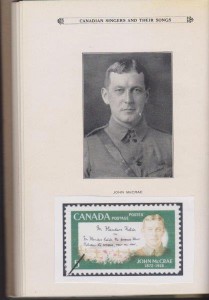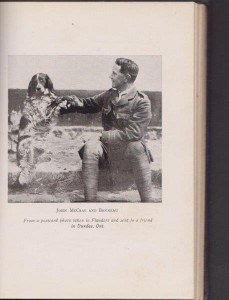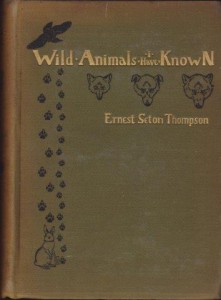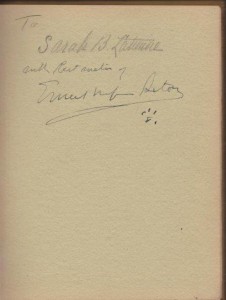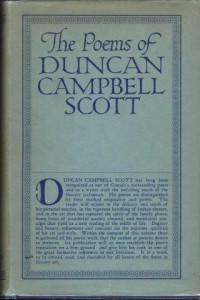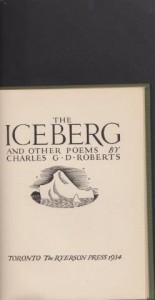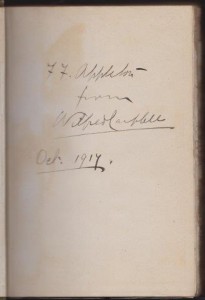((photo of Service from Canadian Singers and Their Songs, McClelland & Stewart, 1919)
(“My Madonna” handwritten poem, 1918, from above book)
(rare signed book with buckskin-fringed cover, 1st ed. Ballads of a Cheechako, Briggs, 1909, purchased from Landahl’s Emporium Books & Stationers, Dawson, Yukon)
(rare signed copy of above book)
(4 L.P.s of Service poems; he is the first Canadian writer to have had his work recorded muchly; left to right, top to bottom: The Poetry of Robert W. Service read by Ed Begley, Caedmon; Pierre Berton Reads Robert Service–Dawson author reads another Dawsonian’s work, Arc–Berton also wrote and narrated the N.F.B.’s documentary “City of Gold”; The Spell of the Yukon read by J. Frank Willis, Ringside, 1962; Robert Service Recites, Golden Nugget, 1967. Also recommended listening: Not pictured here–Tales of the Yukon–by Hank Snow, Camden, 1974; CD–Robert Service: His Own Voice, Prince George Oral History Group, 2000)
Scottish-born Robert (William) Service (1874-1958) worked as a bank clerk in Dawson and Whitehorse from 1904-1912. His first book, Songs of a Sourdough was published in 1907 and his Rhymes of a Red Cross Man (1916) was one of the most popular books in WWI. He married a French girl in 1913 and ended up living wealthily in Paris, Brittany, and on the Riviera. His poetry books still sell today; he was the first Canadian poet to be able to make a living strictly on the basis of his poems. For many decades in the twentieth century, he remained Canada’s best-known and most popular poet. His rhyming narrative verse such as “The Shooting of Dan McGrew” and “The Cremation of Sam McGee” significantly contributed to the creation of a romantic aura about the Gold Rush and the Canadian North. Many a Canadian student has memorized and recited one of these two famous poems.
Recommended reading: The Best of Robert Service–poems with vintage photos, Running Press, 1983; best bio to date: Robert Service Under the Spell of the Yukon, Heritage House, 2006; best kid book adaptations of Service classics by artist Ted Harrison–The Cremation of Sam McGee and The Shooting of Dan McGrew, Kids Can Press, 1986 & 1988.







